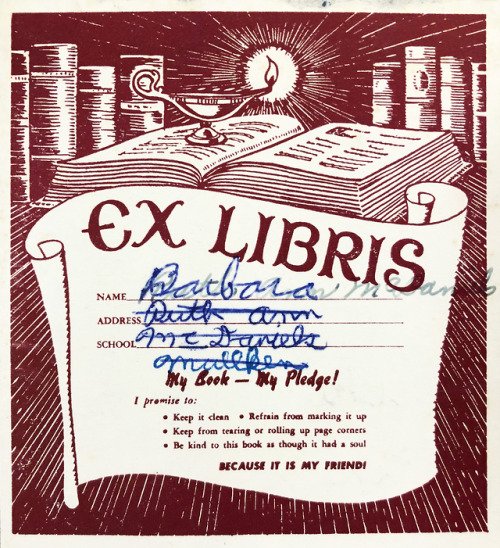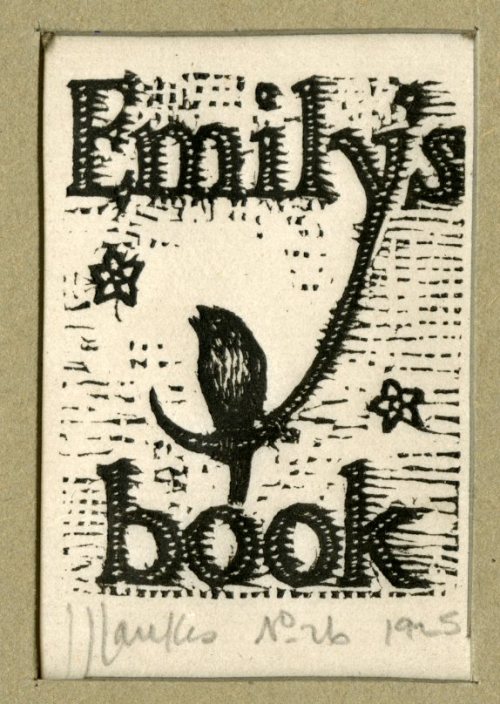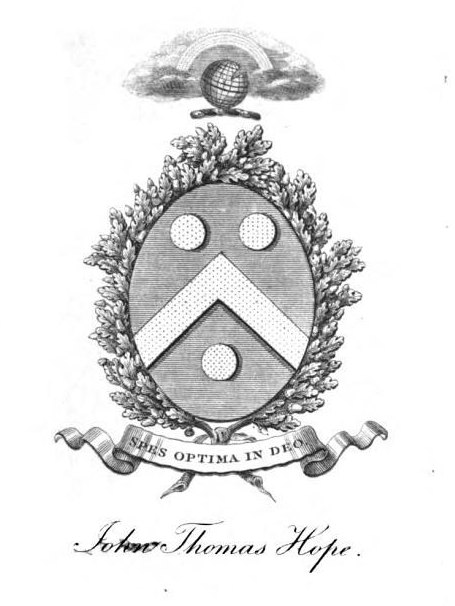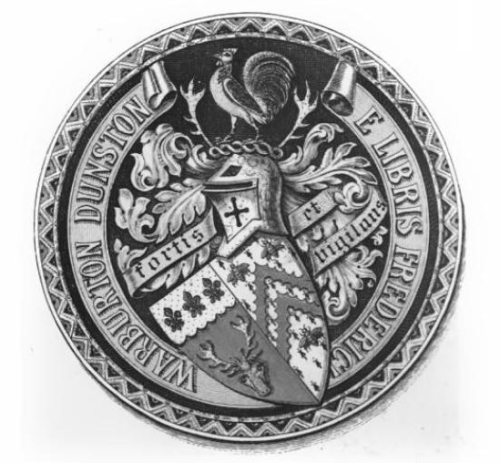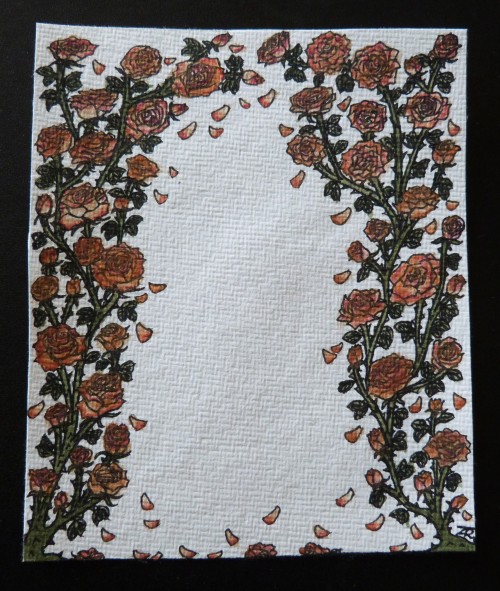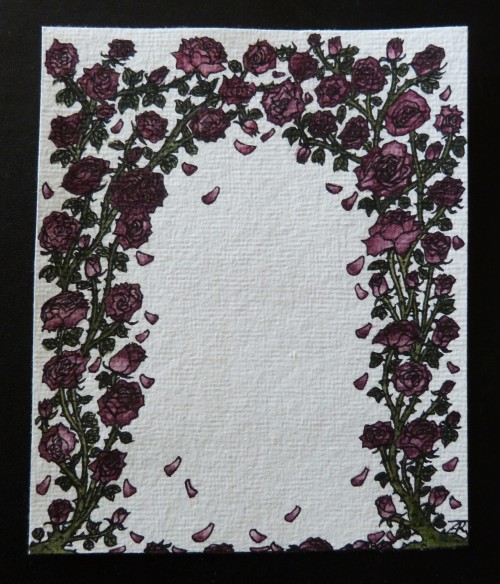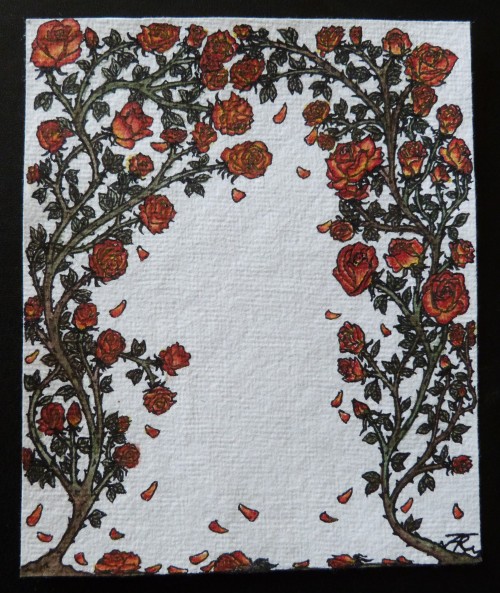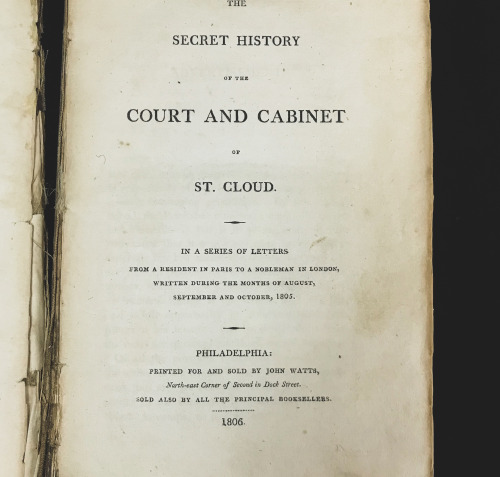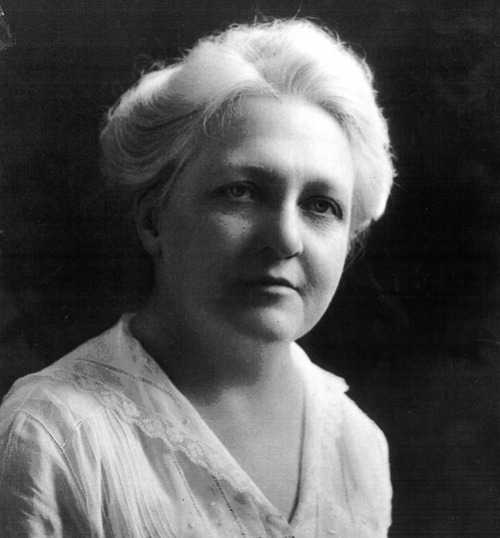#bookplates
Over the years, many primary and secondary schools have employed bookplates to admonish students against marking up their textbooks. These three examples all come from 1940s American school books, but each one delivers its message in a very different way!
Some school bookplates, such as this eye-catching red one pasted into a 1942 third-grade grammar book, are touchingly poetic, requiring that its owner promise to:
Keep it clean; Refrain from marking it up; Keep from tearing or rolling up page corners; Be kind to this book as though it has a soul
Because it is my friend!
Other examples seem a bit more sterile, by comparison. The language used in this 1947 French textbook, for example, matches the plain, utilitarian design of the bookplate:
Please do not write in this book. Remember that other students must use it later. Please keep it as neat and unsoiled as you can. Your cooperation in this matter will be appreciated.
Our final bookplate, from a 1946 English reader, is decidedly more… civic-minded. Issued and owned by the State of Arizona, this label outlines what it calls the “Good Citizenship Code For Pupils Using State Textbooks”, a set of rules that includes such pledges as:
I will respect and take care of the property of the State.
I will keep my books clean outside and inside.
I will not spoil their pages with finger prints.
I will guard my books as a trust from the State.
I will keep my books fit for those to use who come after me as I expect those who come before me to keep their books fit for me to use.
Of course, as we have seen over andover andover again, schoolchildren were generally not afraid to mark up their textbooks. We’ll leave it to our followers to decide which books (in the words of that first bookplate) have more soul: the clean, unmarked copies or the used and soiled ones.
Post link
Emily loved books.
J.J. Lankes bookplate, 1925 from the Adèle Goodman Clark papers, 1849-1978, Special Collections and Archives, James Branch Cabell Library. A Lankes’ sketch for this bookplate may be found online.
Post link
Bookplate Beauts: Jerome
We love this bookplate, in use in the mid-20th century at Andover-Harvard Theological Library (now Harvard Divinity School Library) partially because the Latin translation by St. Jerome (also called Hieronymous) is so important in the history of biblical studies, but also because Jerome is the patron saint of librarians. :)
Post link
Bookplate Beauts: Samuel H. Miller
We are starting a new series on bookplates in our collections! We plan to show ownership bookplates used by Harvard Divinity School Library over the past 200 years, but also interesting bookplates from former owners.
What better way to kick off the new series the week of Halloween with the personal bookplate of Samuel H. Miller (1900-1968), former HDS Dean and accomplished artist. (He created his bookplate himself using a linocut technique.) His motto here, Periissem nisi periissem, was also the motto of theologian Soren Kierkegaard, and could be translated as “I would have perished had I not perished.”
Post link
The sixth and final rose-patterned bookplate from a set I as commissioned to draw. :)
Send me a message if you’d like a commission, either on here or at my facebook page: www.facebook.com/TabithaMarshART
Post link
The fifth of six rose-patterned bookplates I was commissioned to draw! :)
If you’d like to commission me, just send me a message on here or at my facebook page ( www.facebook.com/TabithaMarshART ). Thank you! :)
Post link
The fourth of six rose-patterned bookplates I was commissioned to draw. :) Send me a message if you’d like to commission me, either on here or at my facebook page, www.facebook.com/TabithaMarshART.:)
Post link
The third of six rose-patterned bookplates I was commissioned to draw. :)
If you would like to commission me, please send me a message on here or at my facebook page, www.facebook.com/TabithaMarshART
Post link
The second of six rose-patterned bookplates I was commissioned to draw. :)
If you’d like to commission me, please send me a message on here or at my facebook page, www.facebook.com/TabithaMarshART
Post link
The first of six rose-patterned bookplates I was commissioned to draw. These were absolutely lovely to create.
If you would like to commission me, please just send me a message, either on here or at my facebook page, www.facebook.com/TabithaMarshART:)
Post link
This post was written by Natasha Skorupski, a Department of Classics Intern in Archives & Special Collections for the Spring of 2022.
Archives & Special Collections at the University of Pittsburgh holds many rare books and printed materials. During my internship with the Hillman library and the Classics Department, I came across an interesting book: Harmonia Macrocosmica or Atlas Universalis Et Novus created by Andreas Cellarius and published in 1708. However, it was not the words or even the illustrations that interested me; instead I was taken by how the book was printed. The images and texts seemed to be printed on one page and then that page was bound to another.


(Above) If you look very closely you can see a faded line parallel to the final bordering black line. The faded line marks where the page, containing the colored print and illustrations, is adhered to the blank page that is part of the bound book.
For hours I searched trying to figure out the name and more about this process. Eventually I came upon a small bit of information. Tip in (or tipping-in) printing is when a printed sheet is inserted into a book or manuscript by gluing (or stapling) it to an existing page. However, the printed page is not part of the book’s binding (Glossary of Book Terms). This was exactly what I was looking for, except after discovering this, I could find absolutely nothing directly about its history. From searching many different sources and putting pieces together, I came across this conclusion—the original printed pages were mass produced and then (at least for this manuscript) the illustrations were hand painted in, and the paint looks quite similar to a watercolor based paint.
Having the pages as individual sheets allows for multiple people to be working on the pages at once, and also allows the artist to immediately move to the next page without having to wait around for the paint to dry. Whenever the paint on the page has dried, it can be bound or glued to a bound book. This is a slower process as only one page can be done at a time, and the glue/paste binding the pages together must fully dry before one is able to move onto the next page. While it was hard finding out about the background of these types of books, there were numerous resources on how to paste bookplates and individual pages into a book.
The process of binding pages together is extremely simple and is precisely what you think it would be. There are tiny variations in the process, but I will explain to you the one I found on the website of wood engraver and illustrator Andy English. The materials he used were a bookplate, scrap paper, pencil, small brush (good enough to avoid bristles detaching themselves), glue, a soft cleaning cloth, and a container to mix in (English).

(Above) Image from “Pasting Bookplates into Your Books” by Andy English, 2021.
He recommended PVA (Polyvinyl acetate) glue as it is easily thinned with water, flexible, and acid free. This is important as his mixture is about 60% glue and 40% water, with is mixed in the container. However, he notes that he uses a little less water for paperbacks. Before you start, make sure to wash your hands and keep them clean at all stages. Take the bookplate/page you wish to attach and place it on the book/page where you want it. If you wish, you may mark in faint pencil marks the corners of where the attached page will go. Once the mixture is made, place the bookplate/page face down on a clean piece of scrap paper (photocopy paper is perfect). Take some paste on the brush and (holding the plate firmly with a finger) brush the paste on the bookplate/page from the center going outwards (English).

(Above) Image from “Pasting Bookplates into Your Books” by Andy English, 2021.
It is important not to overload the plate with paste! Once the paste is on, take the bookplate/page and hold it above where you want to place it in the book. Then carefully, but deliberately, place it onto the book and smooth it down. If there is a little too much glue, use a clean cloth (lightly dampen with clean water) to wipe it carefully and use light pressure to avoid damaging the surface of the paper (English).

Lastly, leave the book open until it has thoroughly dried.
Works Cited
English, Andy. “Pasting Bookplates into Your Books.” Pasting In Your Bookplates, PB Hosts, 2021, https://www.andyenglish.com/pasting-in-your-bookplates.
“Glossary of Book Terms.” AbeBooks, AbeBooks, 28 Mar. 2022, https://www.abebooks.com/books/rarebooks/collecting-guide/understanding-rare-books/glossary.shtml#T.
Happy Feline Friday! Today’s featured bibliophilic kitty comes from a bookplate we found in a copy of the first American edition of The Secret History of the Court and Cabinet of St. Cloud (Philadelphia: J. Watts, 1806), an anonymous insider’s account of the personal life of Napoleon I and his inner circle shortly after Bonaparte became Emperor of the French.
The bookplate bears the name of Oregon librarian Mary Frances Isom (1865-1920). Isom served as head of the Library Association of Portland and played an instrumental role in transforming its private subscription-based library into a public institution that would be free for all to use. Her legacy lives on in the Central Library of Portland, the main branch of the Multnomah County Library System.
In addition to her passion for books, Mary Frances Isom valued the well-being of her employees. She worked with the architect of the Central Library building, Albert E. Doyle, to build a vacation home on the northern coast of Oregon. Isom designated Spindrift Cottage as a rest house for her staff.
Images from:
Stewarton [attributed author]. The Secret History of the Court and Cabinet of St. Cloud. Philadelphia: John Watts, 1806.
https://en.wikipedia.org/wiki/Mary_Frances_Isom#/media/File:Maryfrancesisom.jpg
Call number: DC199 .S8 1806B
Catalog record: https://bit.ly/3ENe4EL
Post link

